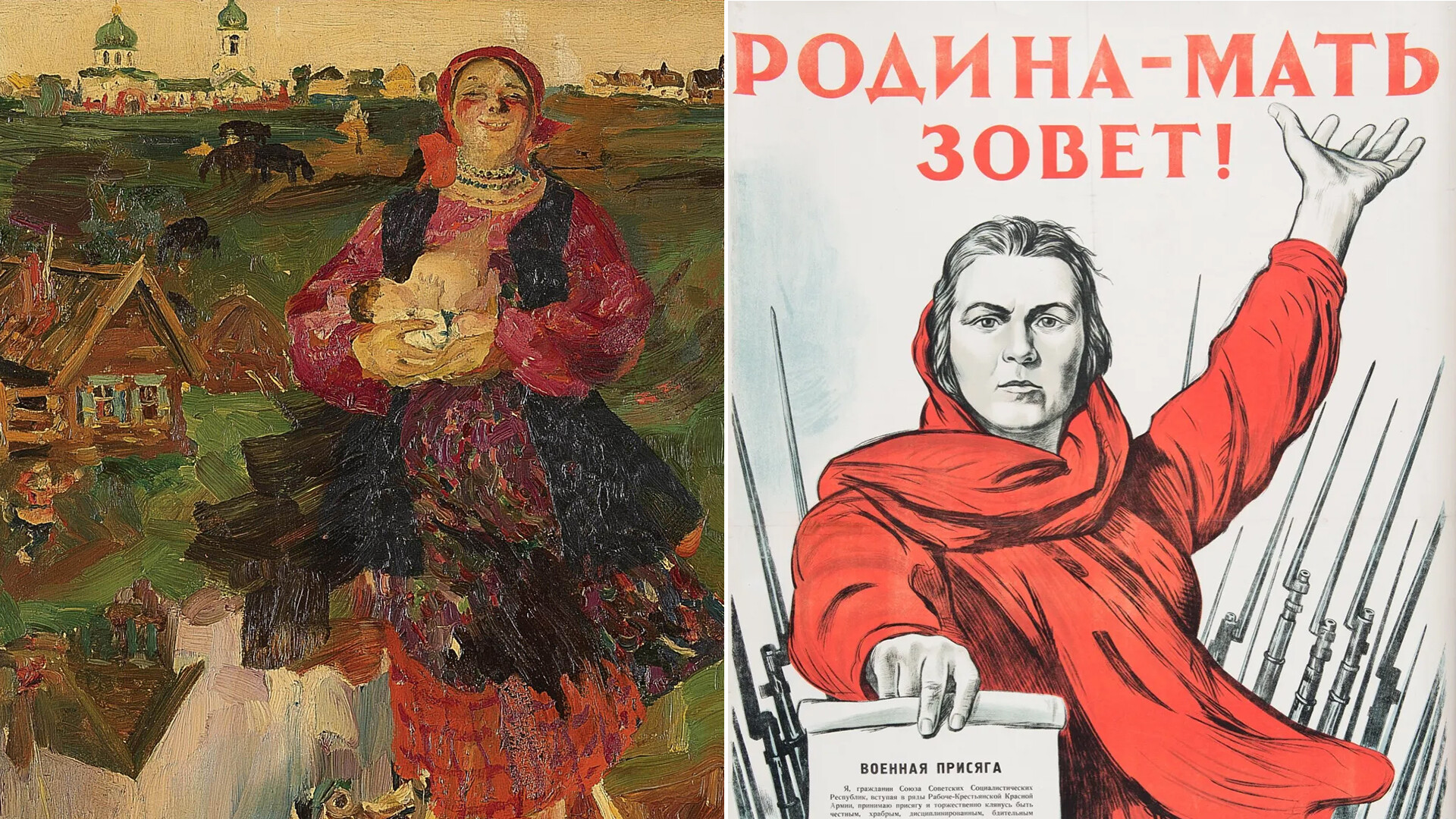
‘Mother Russia’ is one of the main symbols of national unity in Russian political culture, personifying the country and its people. The image is well known not only in Russia, but also abroad.
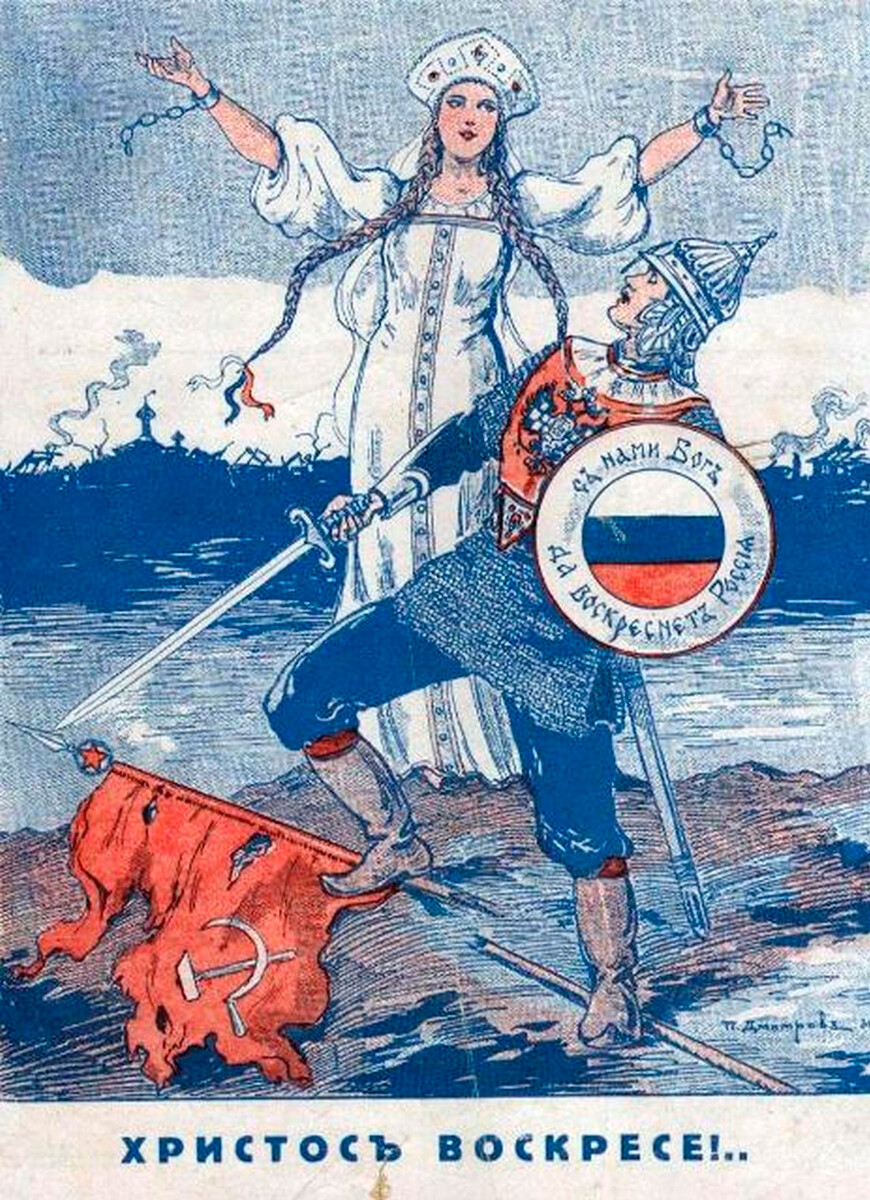
The roots of the symbol go deep into history. It is directly linked to one of the most important deities in the pantheon of the Slavs – the ‘Mat Syra Zemlya’ (‘Moist Mother Earth’), who gave life to all living creatures and plants.
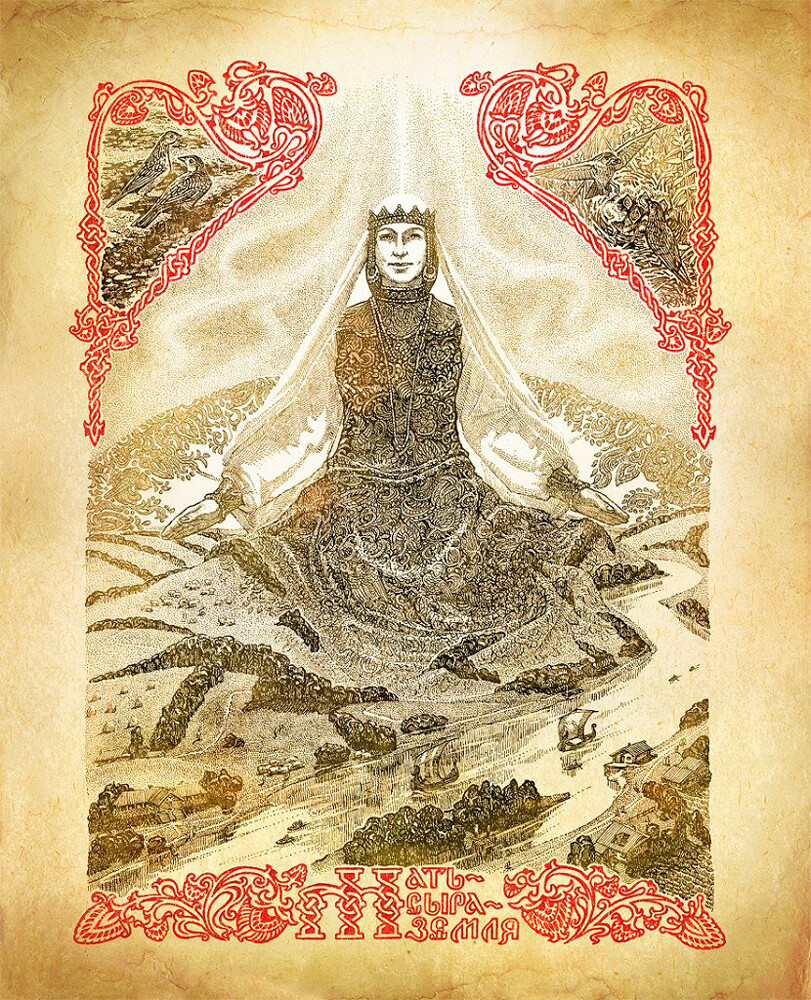
'Moist Mother Earth'.
Public DomainFor centuries, ‘Holy Mother Earth’ was an integral part of Russian culture. During the birth of the Russian Empire under Peter I in the early 18th century, the image was ubiquitous in literature, the fine arts and architecture.
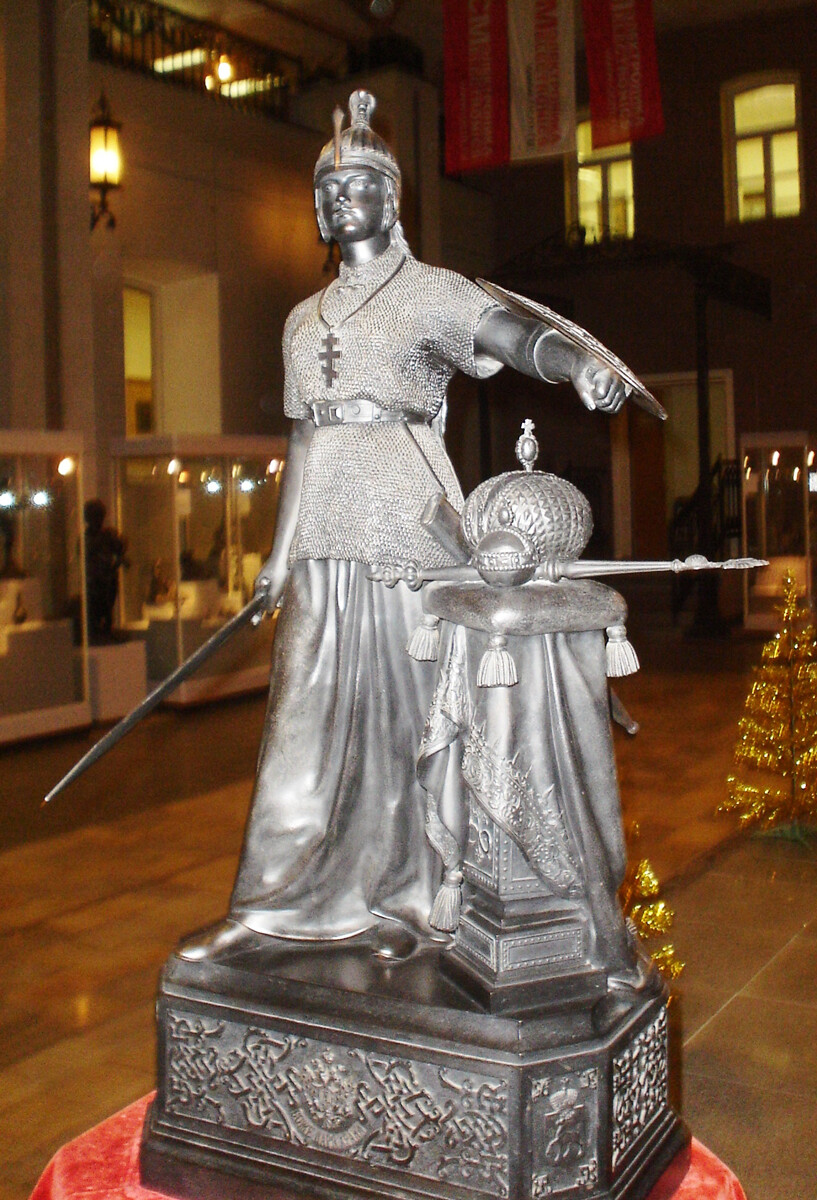
'Russia', 1896.
O. Riabov (CC BY-SA 3.0)Thus, on tsarist seals, ‘Mother Russia’ was depicted as a woman with a crown on her head, a mantle on her shoulders and, in her hands, an orb (symbol of state authority in the form of a gold sphere surmounted by a cross) and scepter.
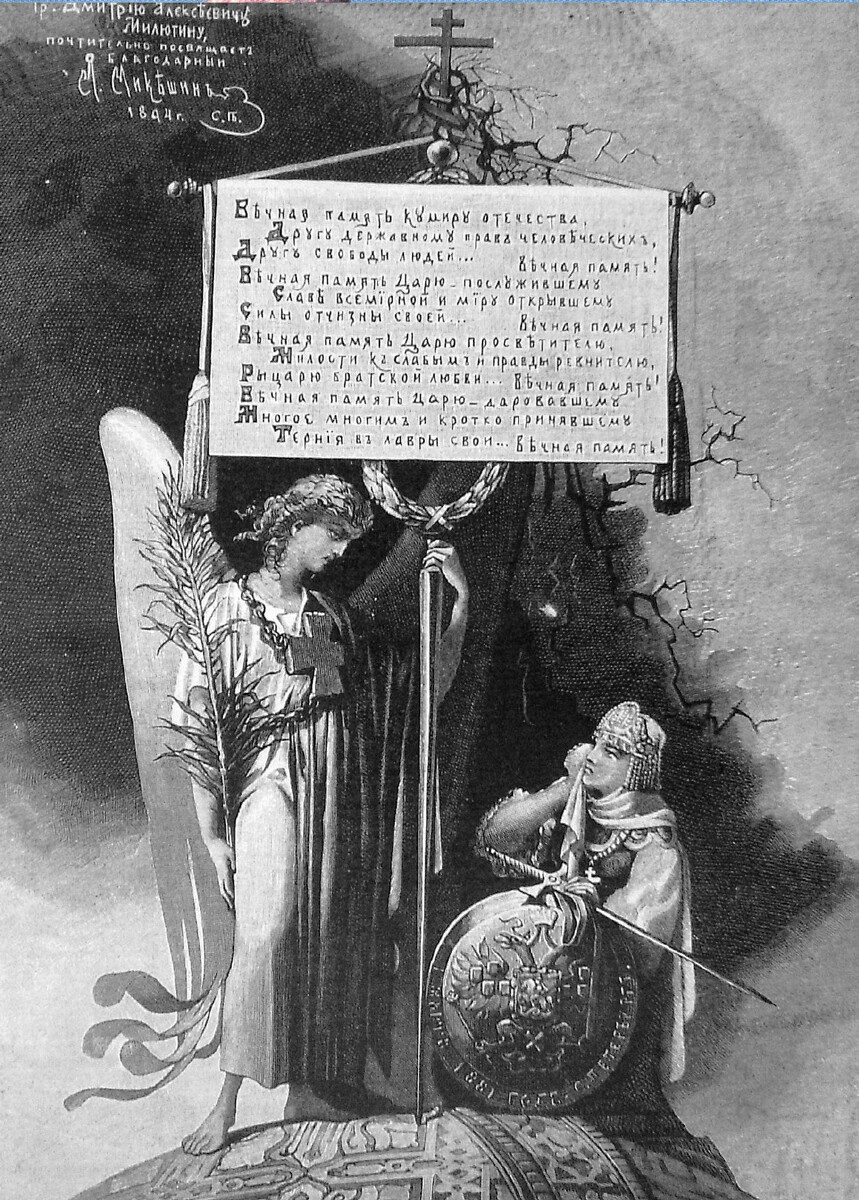
'Crying Russia', 1896.
Public DomainThe image of ‘Father the Tsar’ was inseparably linked to that of ‘Mother Russia’. On being crowned tsar, it was as if the monarch was joined with her in sacred wedlock, acquiring authority over her and the right to speak and act in her name.
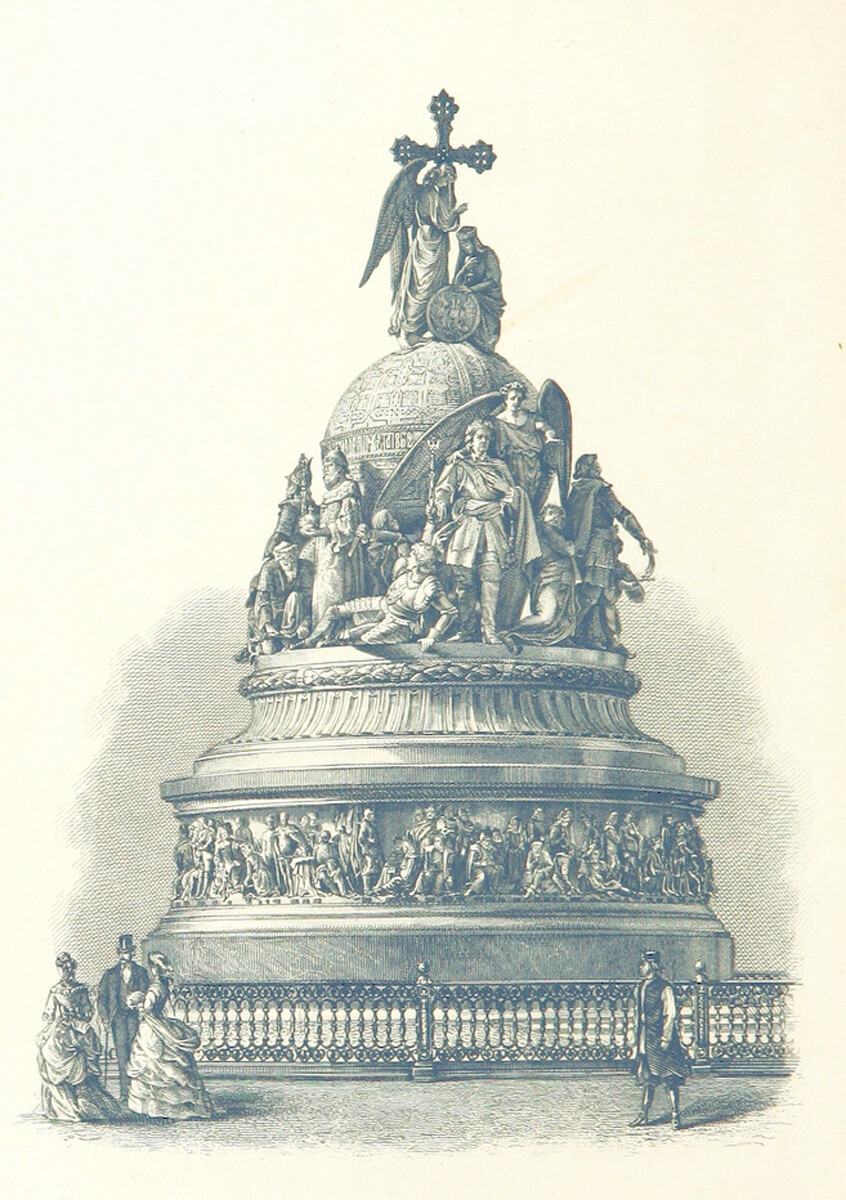
'Millennium of Russia' monument.
Public DomainIn the Imperial period, ‘Mother Russia’ was a symbol of unity, not just of the Orthodox Eastern Slav peoples (Russians, Ukrainians and Byelorussians), but of all the peoples that were part of the enormous state.
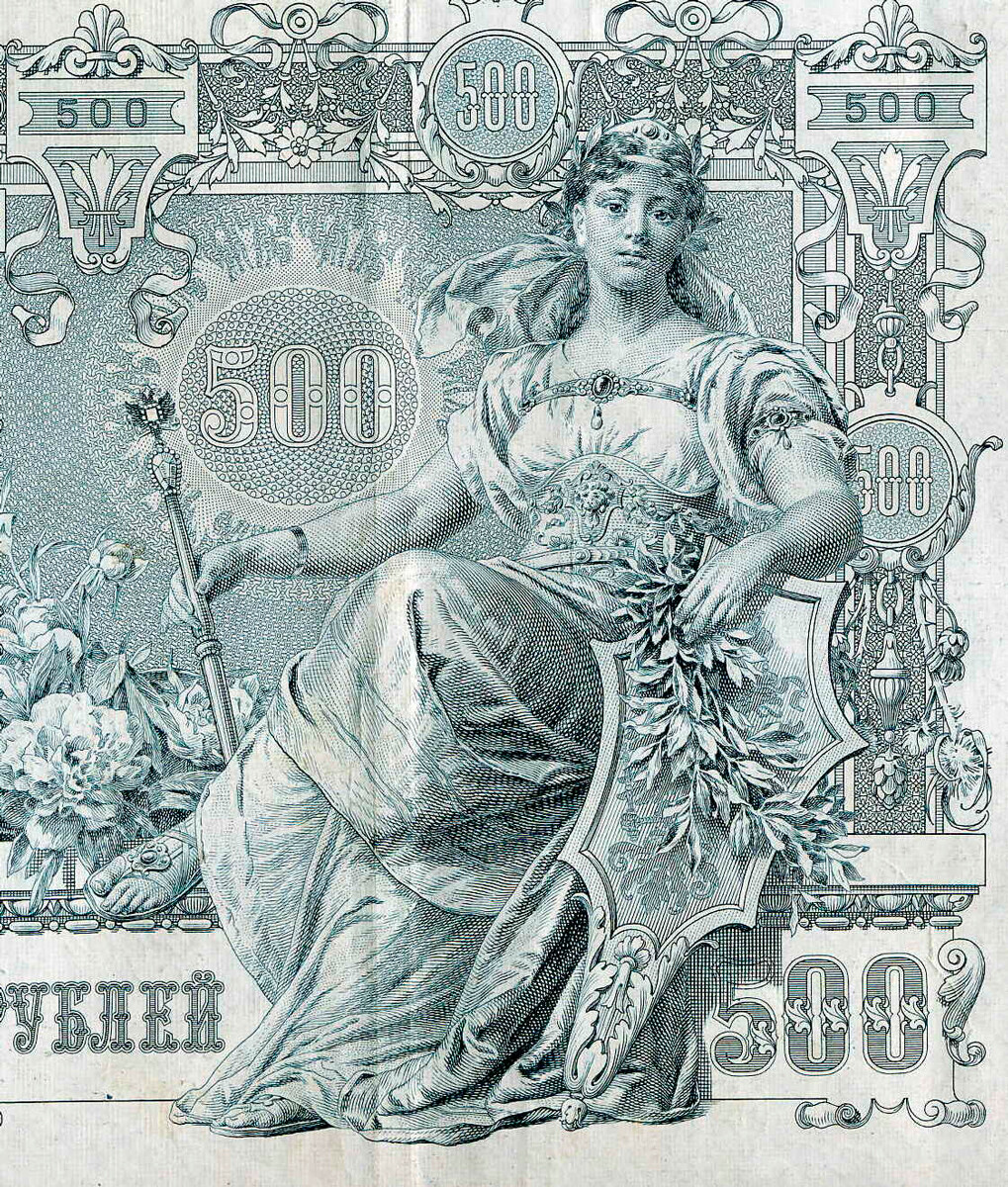
Russian five hundred bill, 1912.
Public Domain‘Mother Russia’ was beneficent, caring and just towards her own, but she was implacable and without mercy to the enemies of the state, the Orthodox faith and Slavdom. In Russian propaganda from the time of the 1877-1878 war against the Ottoman Empire, she was portrayed in the guise of a warrior maiden, who uses her shield to protect a Serbian woman, while she tramples the Turkish crescent with her foot.
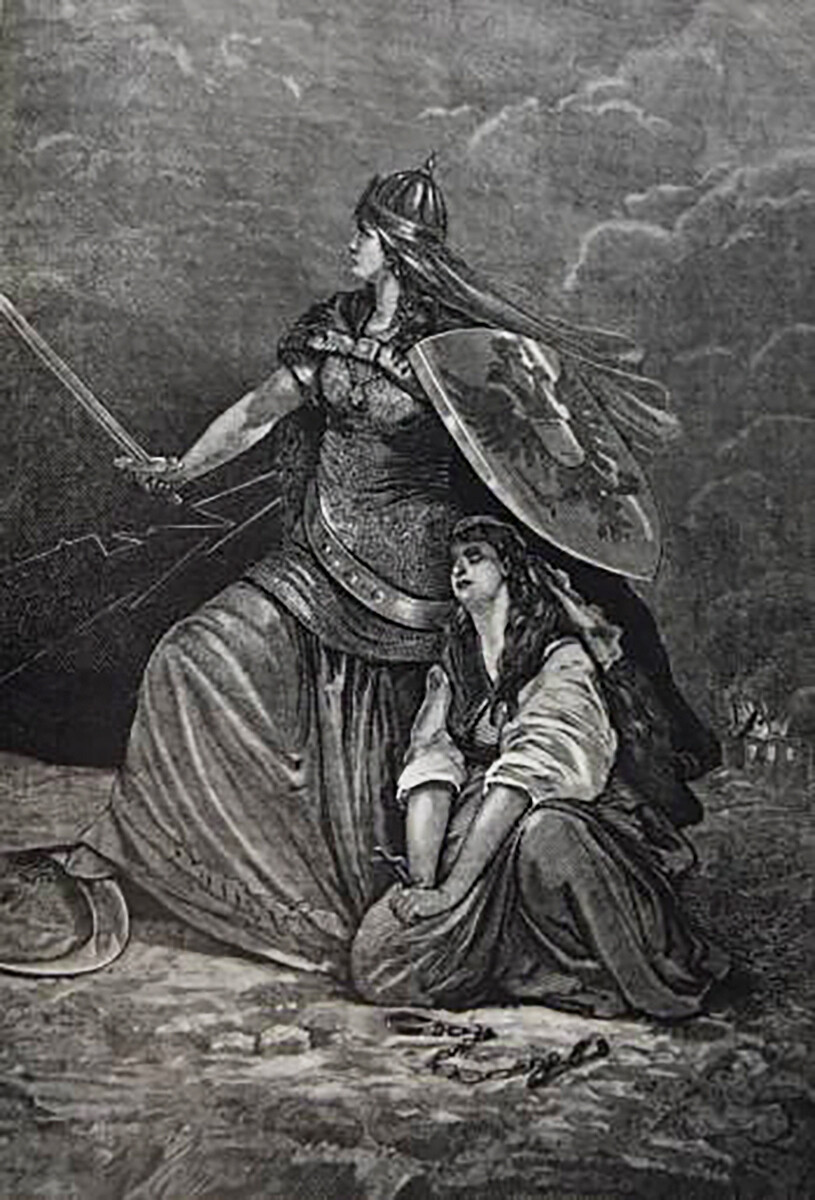
World War I posters portrayed Russia, Britain and France as three saintlike sisters and martyrs: Faith, Hope and Charity. This was to emphasize the just nature of the war on the part of the Triple Entente: "Holy Russia in God's Name Is Pursuing Her Triumphant Path".
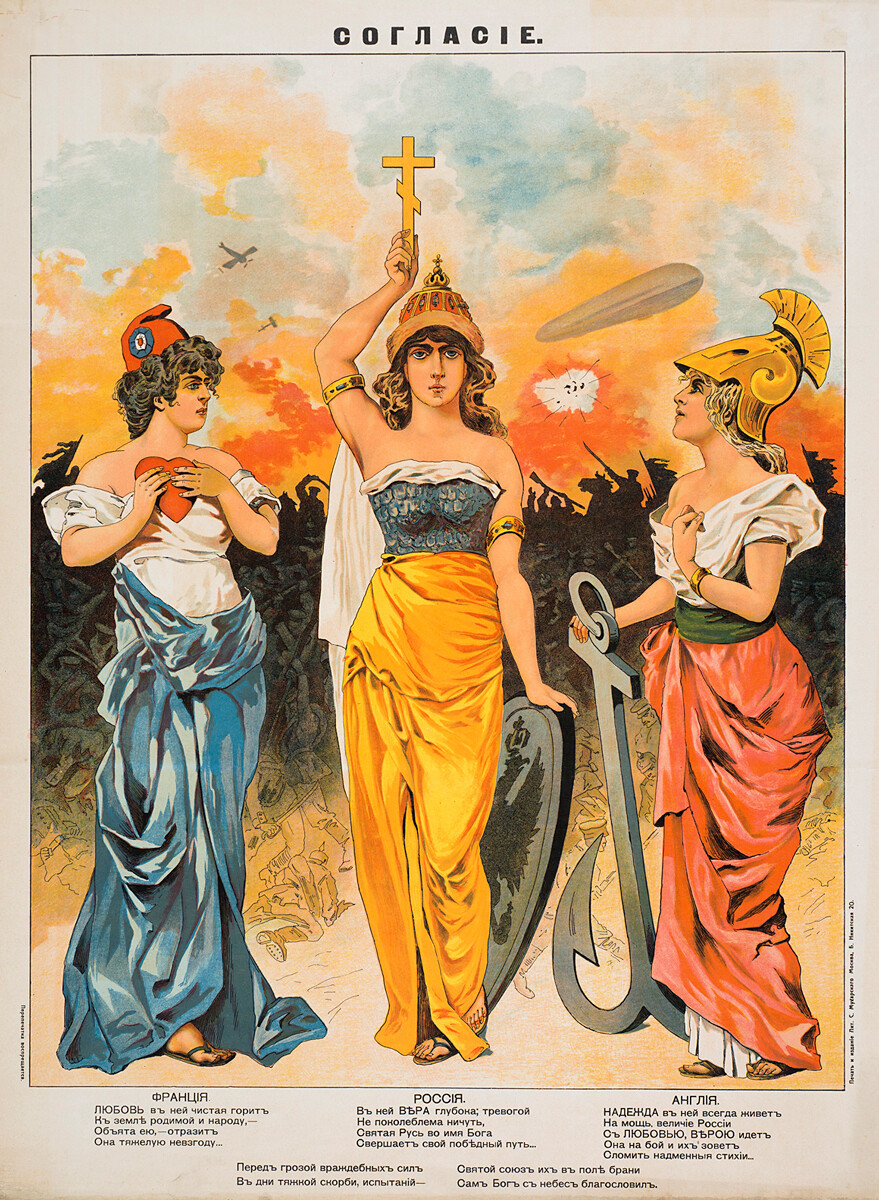
During the Civil War, attitudes to the image of ‘Mother Russia’ changed among parts of society. For the Bolsheviks, it came to be associated with the backwardness and resistance to change of Tsarist Russia. Caricatures appeared, in which a hideous, obese woman (the reference is to the famous symbol) was having her former foolishness flogged out of her.
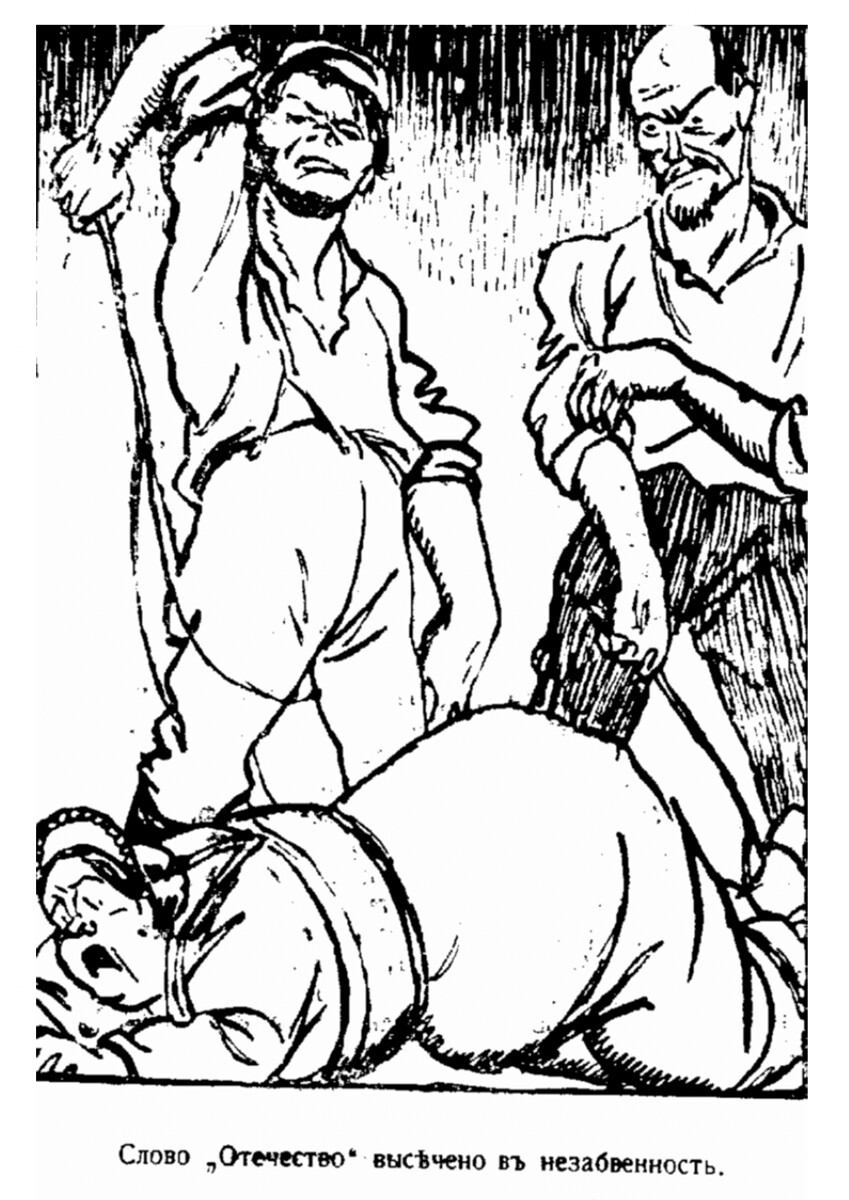
For the ‘Whites’, opponents of Soviet power, the image of Mother Russia remained sacred. In their caricatural poster 'Sacrifice to the International', she appears in the guise of a hapless bound woman, who is being mutilated by the Bolshevik leaders.
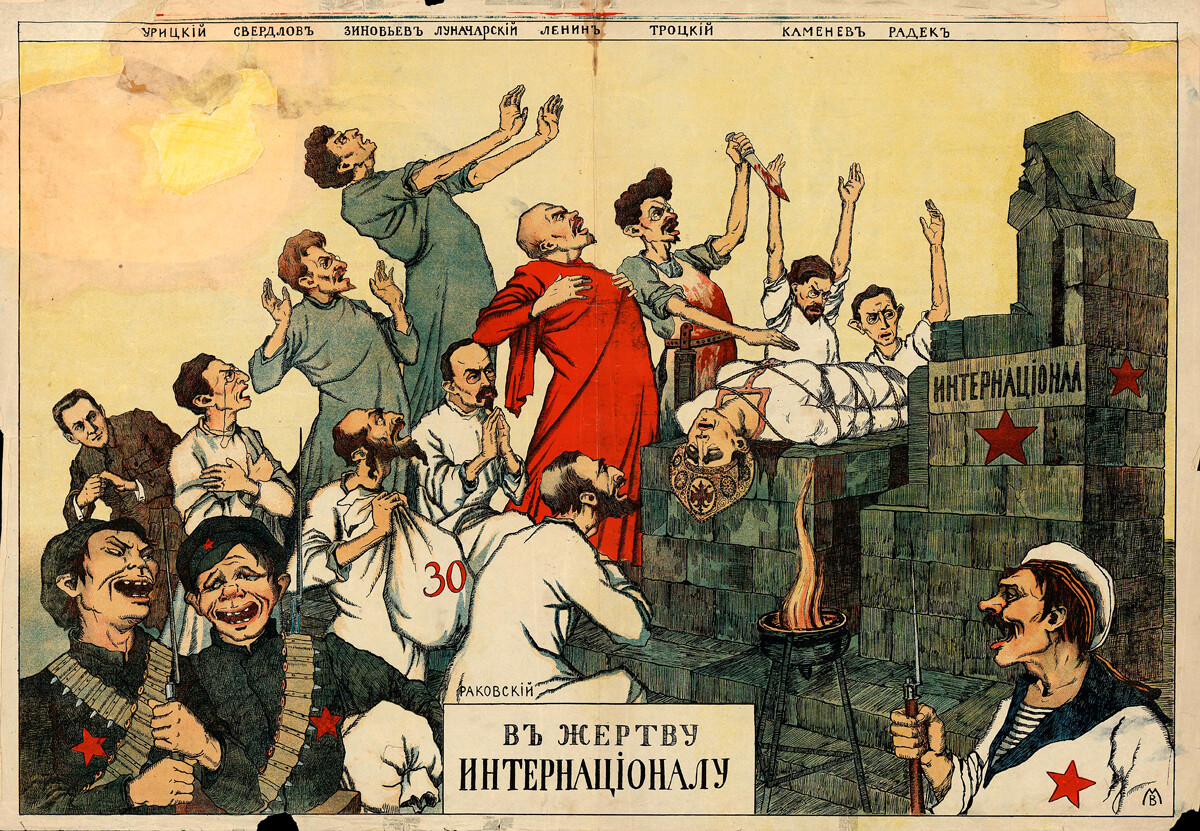
In the Soviet Union, ‘Mother Russia’ was not referred to again for almost two decades. She reappeared in public life in the late 1930s, but this time, in the guise of ‘Rodina-Mat’ – the ‘Motherland’.
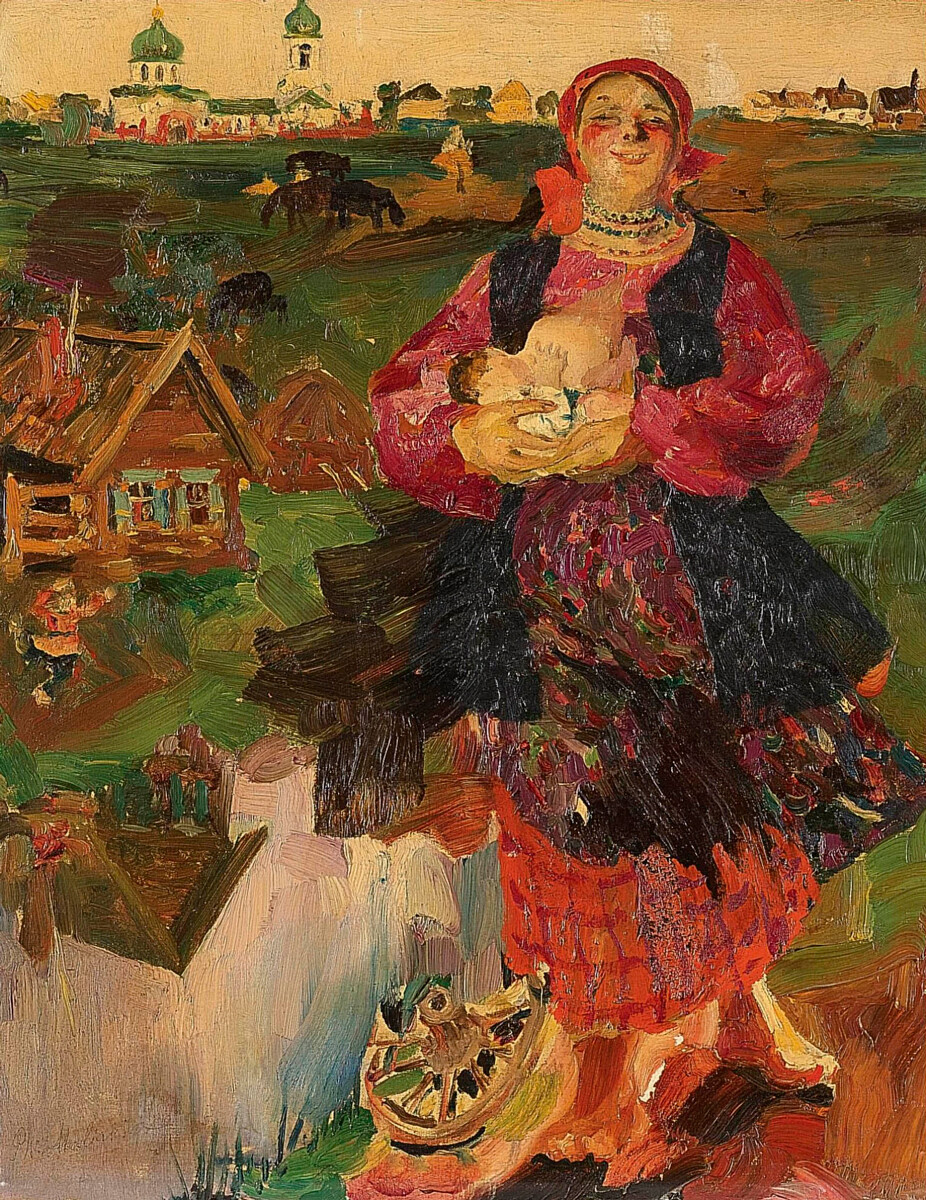
Philip Malyavin. 'Mother Russia'.
Personal collectionThe idea of the ‘Motherland’ reached peak popularity during World War II. A poster, in which she called on citizens to come to the defense of their country, was universally disseminated. When the war was over, an 85-meter-high monumental statue titled ‘The Motherland Calls!’ was erected at the site of the bloody fighting in Stalingrad (now Volgograd).
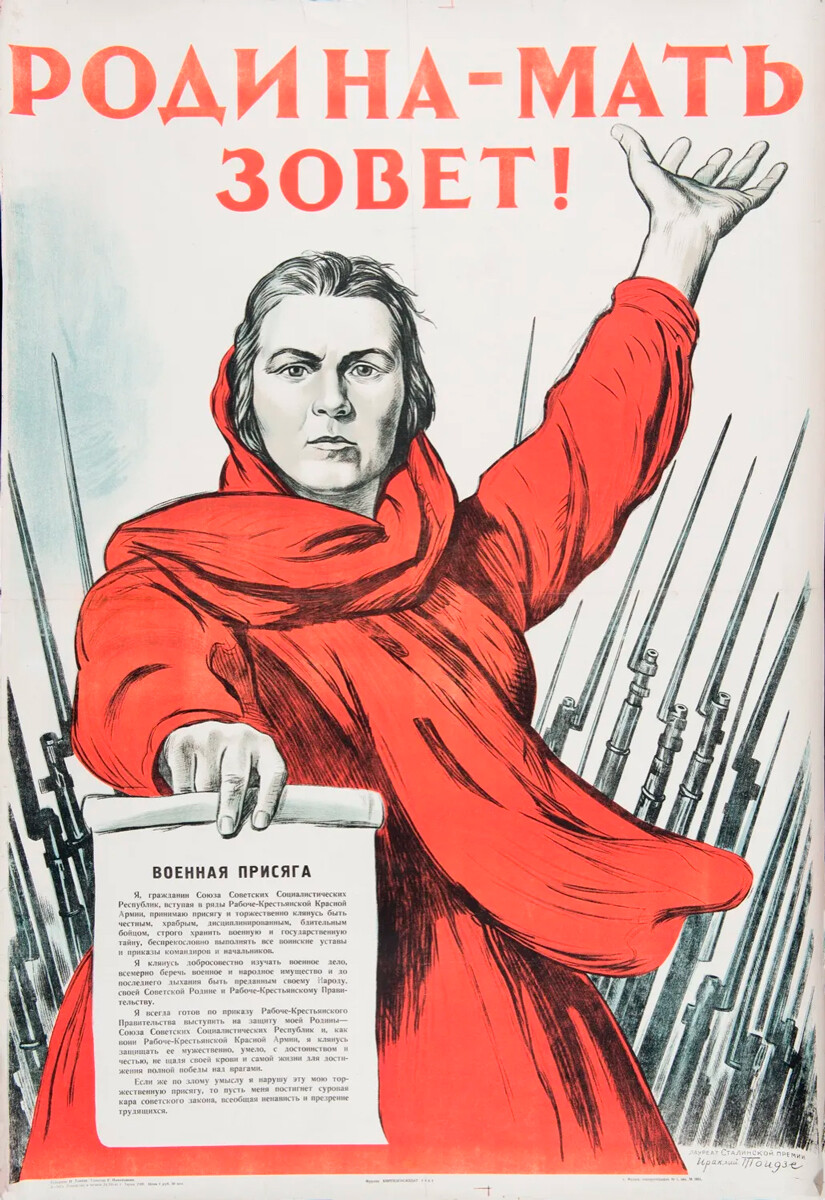
‘The Motherland Calls!’ poster, 1941.
Public DomainFollowing the break-up of the Soviet Union in 1991, Russia found itself in the grip of a protracted economic and political crisis and hardly anyone recalled formerly-prevalent ideological tropes. These days, however, ‘Mother Russia’ is, again, seen as one of the most important symbols of national unity.
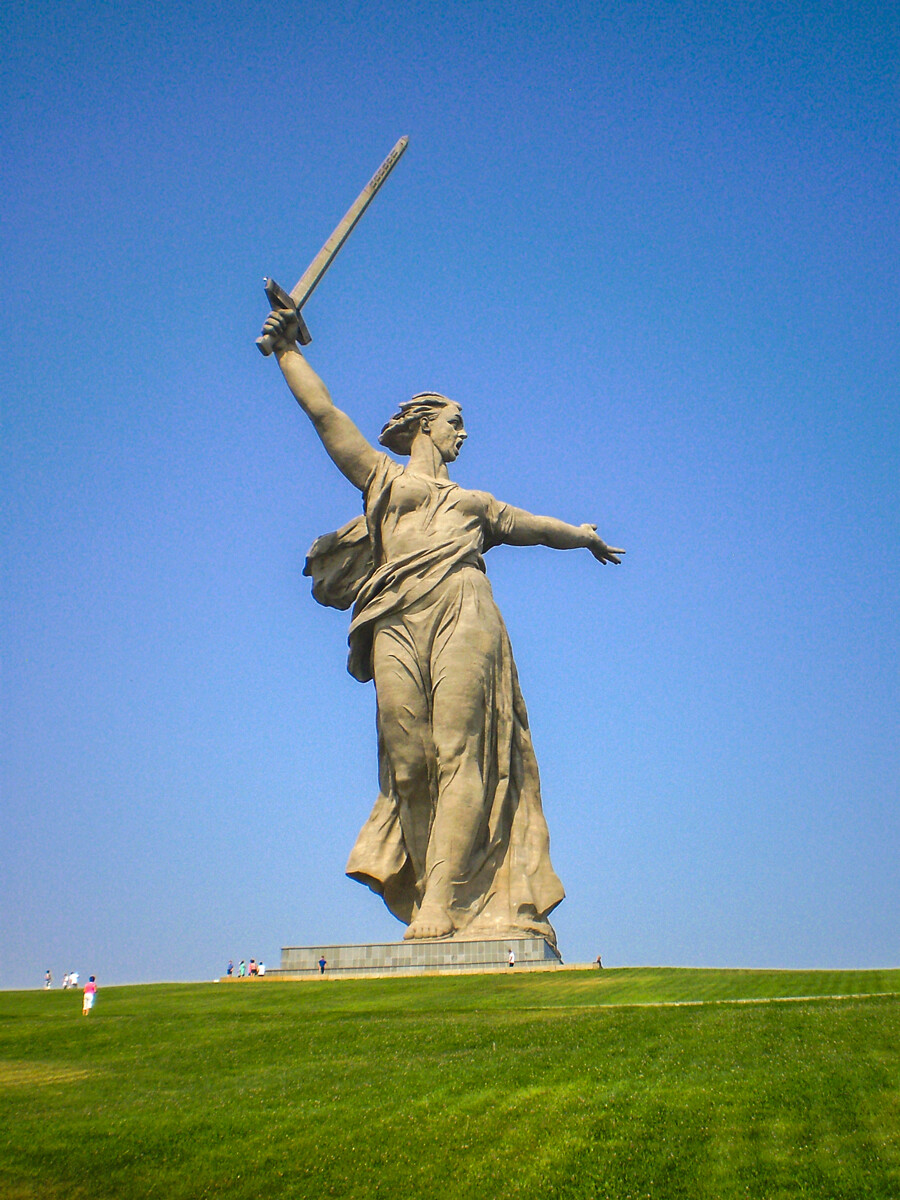
If using any of Russia Beyond's content, partly or in full, always provide an active hyperlink to the original material.
Subscribe
to our newsletter!
Get the week's best stories straight to your inbox